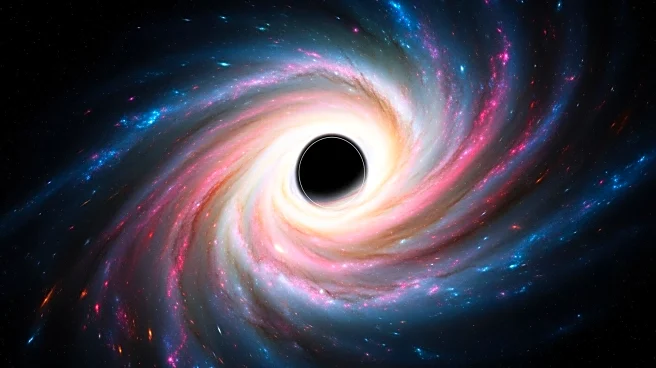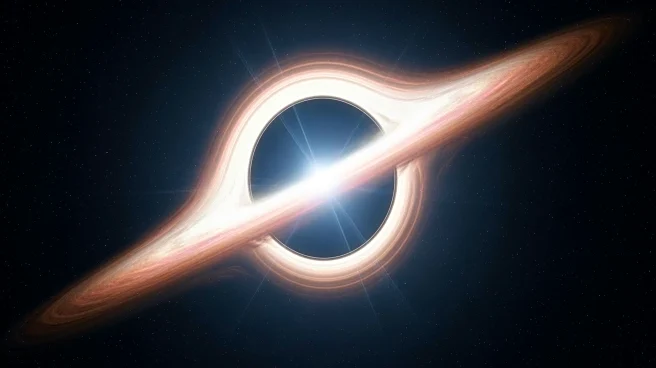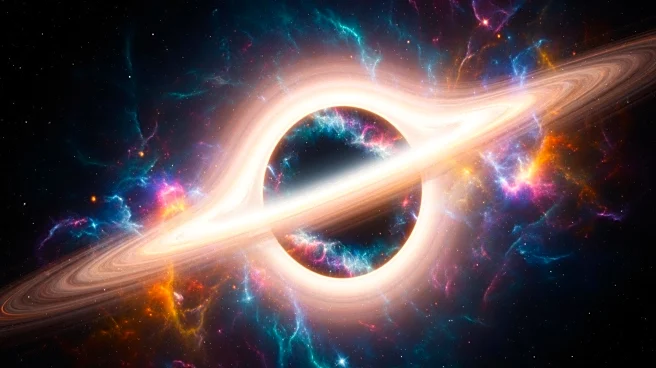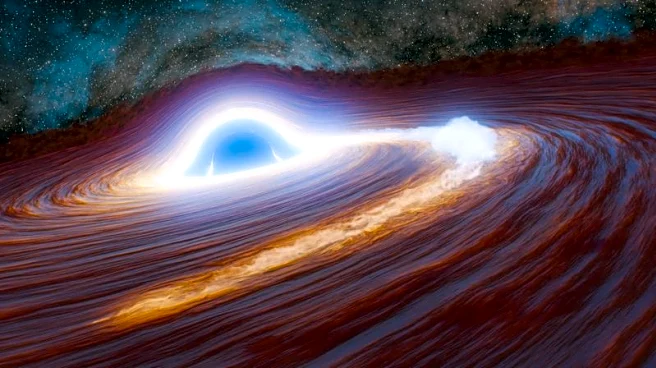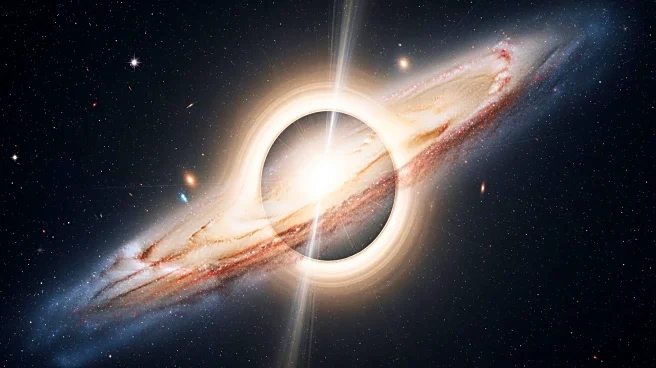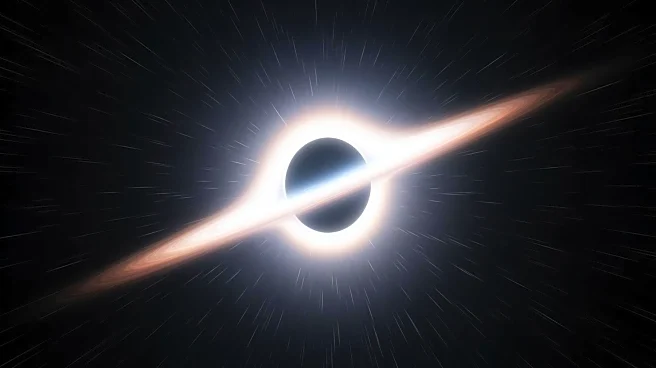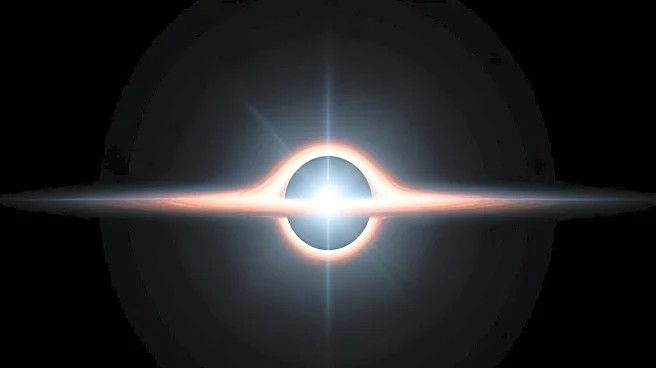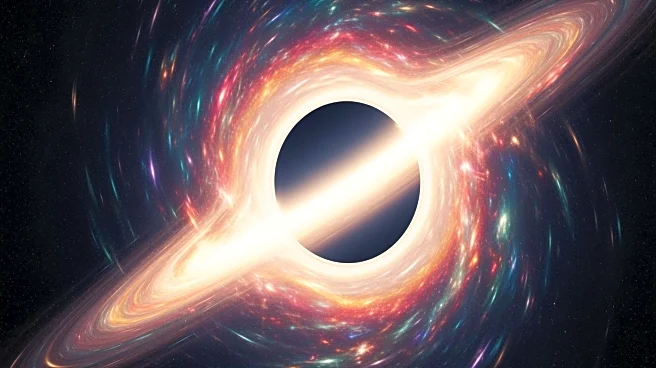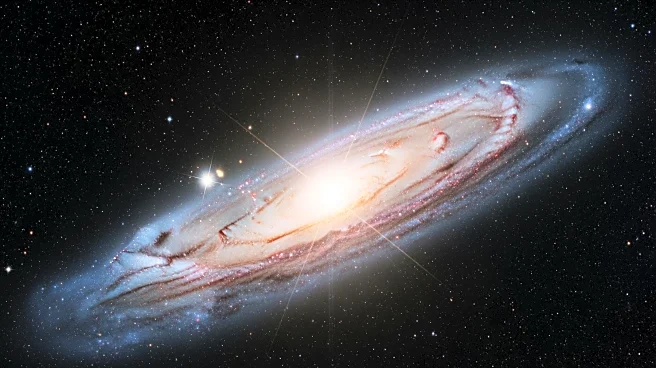What's Happening?
Scientists have observed the brightest flare yet from a supermassive black hole, shining with the light of 10 trillion suns. This event, detected by the Palomar Observatory, is believed to have been caused
by a large star being torn apart by the black hole's gravitational forces. The flare, located 10 billion light years away, provides a unique opportunity to study the dynamics of black holes and their interactions with surrounding matter. The findings were published in Nature Astronomy, highlighting the significance of this cosmic event.
Why It's Important?
This discovery offers valuable insights into the behavior of supermassive black holes and the processes that occur during tidal disruption events. By studying such flares, scientists can better understand the conditions that lead to these powerful emissions and the role of black holes in galaxy evolution. This knowledge is crucial for developing models of black hole activity and understanding the broader dynamics of the universe.
What's Next?
Continued observation and analysis of the flare will help refine models of tidal disruption events and the environments of active galactic nuclei. Researchers aim to identify more such events and understand the variability in black hole activity. This could lead to a deeper understanding of the mechanisms driving these powerful cosmic phenomena and their impact on the surrounding universe.
